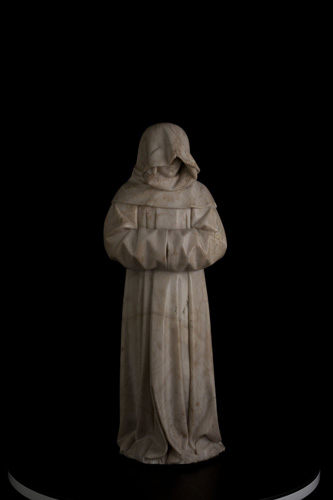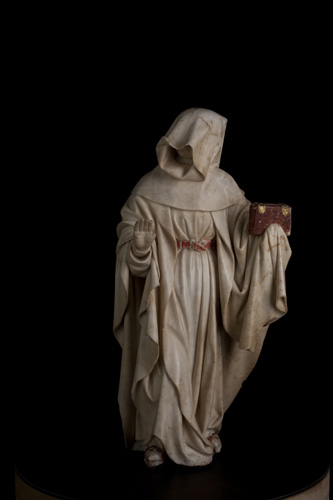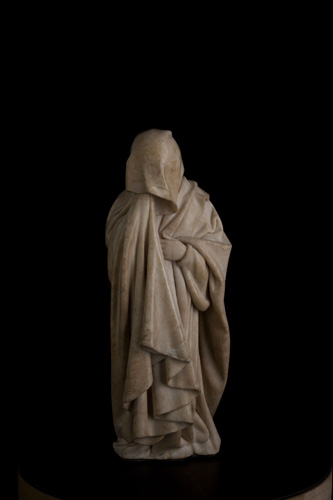Once in a while an art exhibition presents with such a dizzying splendor as to literally take your breath away. The Mourners, which closed at the Metropolitan Museum of Art in NY on May 23, is one such show. The exhibition--which will travel to six American museums beginning this month--features 37 alabaster statues, each about 16 inches tall, standing one behind the other in somber procession. This community of mourners was sculpted in Dijon, France in the 15th century to adorn the tombs of John the Fearless and his wife Margaret of Bavaria of the Duchy of Burgundy.

I ran, not walked to the Met to see these statues after reading that the historian Johan Huizinga proclaimed them the most profound expression of mourning in the history of art. Historian, you had me at "most profound." Superlatives intrigue me and these Mourners do not disappoint. Firstly, I was struck by the multiplicity of figures lending this parade of sorrow immense power. The congregation of statues stands in two parallel lines with a shorter choirboy out in front. I entered the exhibit head on and the impact of the foreshortened figures behind the choirboy was entrancing. A closer look at the two columns of alabaster men revealed that each figure is also an exquisite individual, engaged in a private act of bereavement.
Each Mourner stands at a slightly skewed angle, facing out. One covers his face with his hands and weeps, another reads directly from a Bible. Others clutch prayer books or rosaries close to their cloaked bodies. One looks heavenward as if pleading with God to take away the deep sense of loss that accompanies the death of another human being.

Some of the Mourners have their heads completely covered by their cowls, while others peek out from the corner of the cloth. One monk's thumbs rest above his belt, while another one's hands reach skyward, fingers splayed. I was awe-struck that this intense outpouring of emotion was expressed in alabaster, beautifully carved and articulated, but inanimate still.
Jean de la Huerta and Antoine le Moiturier carved the Mourners, Carthusian monks, choirboys, deacons, a bishop and members of the secular clergy, between 1443-1456. They typically reside under an architectural canopy that supports the tombs and effigies of the aforementioned Ducal couple at the Musée des Beaux-Arts in Dijon, the capital of the Duchy of Burgundy during the late Middle Ages.
The tombs and Mourners were originally situated in the Chartreuse de Champmol, the mausoleum Philip the Bold, John the Fearless's father and founder of the Duchy, built in Dijon for his tomb and that of his heirs. The style of John's tomb closely follows that of Philip's. The Chartreuse was destroyed during the French Revolution and the tombs of father and son and accompanying statues were subsequently moved to the Musée in Dijon.
While the Musée undergoes renovations, the Mourners have been temporarily removed. And so, we have what undoubtedly will be a once-in-a-lifetime opportunity to see the sculptures off site. The Mourners are traveling under the auspices of FRAME (The French/Regional/American Museum Exchange). Organized by the Dallas Museum of Art and the Musée des Beaux-Arts, Dijon, the exhibition venues are the Saint Louis Art Museum, Dallas Museum of Art, Minneapolis Institute of Arts, Los Angeles County Museum of Art, Fine Arts Museums of San Francisco and Virginia Museum of Fine Arts.

Captions: Mourners no. 56, 78 and 52, Jean de La Huerta and Antoine le Moiturier, alabaster (1443-56)